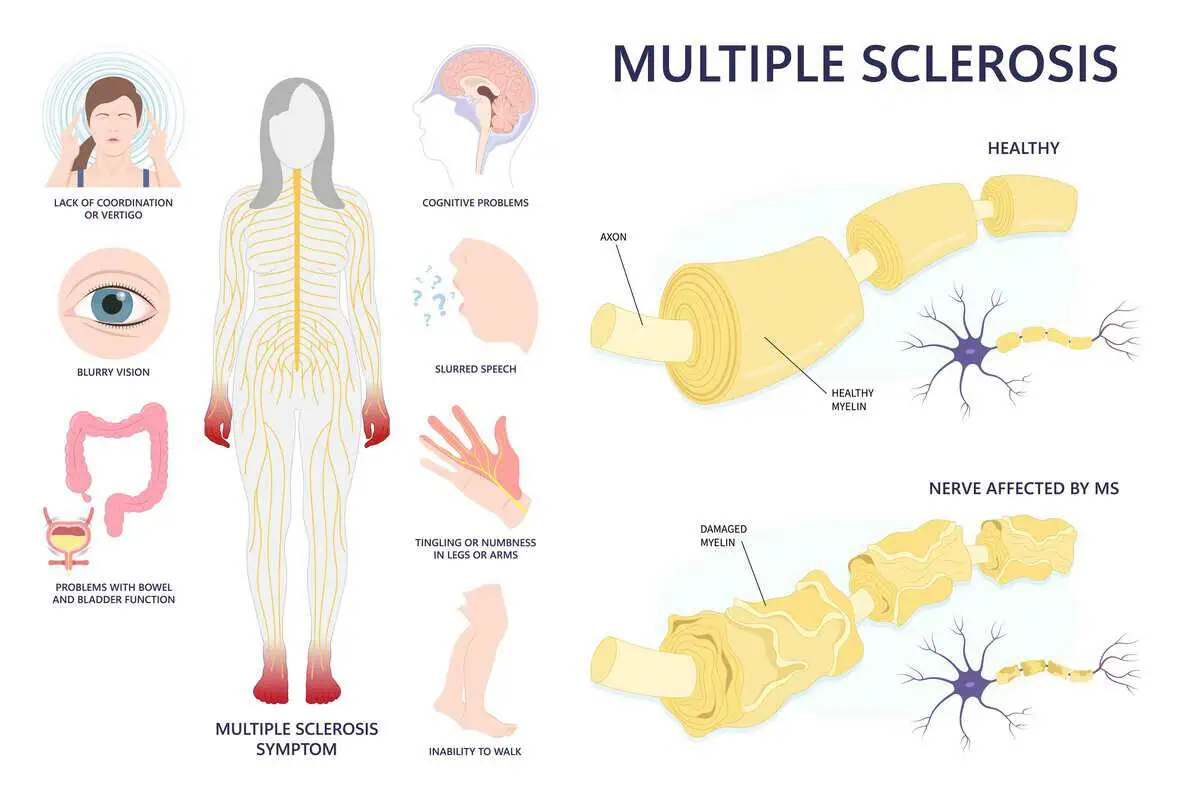

Medically reviewed by Dr. Lauren Weber, MSCP, ABOM.
Red Light Therapy (RLT) is gaining attention as a promising complementary treatment for Multiple Sclerosis (MS). Known for reducing inflammation and promoting healing, RLT—also called photobiomodulation (PBM)—may relieve common MS symptoms such as fatigue, brain fog, and impaired mobility. While not a cure, it is potentially a supportive tool in managing MS.
Red Light Therapy uses specifically optimized wavelengths of light, typically in the Red (600–700 nm) and Near-Infrared (700–1200 nm) spectrum, to penetrate the skin and stimulate cellular function.
At the core of this process is mitochondrial activation. Red and Near-Infrared Light is absorbed by cytochrome c oxidase, an enzyme in the mitochondria responsible for producing adenosine triphosphate (ATP)—the cell’s energy currency. More energy means cells can function more efficiently, heal faster, and reduce oxidative stress.
MS is an autoimmune disorder in which the immune system attacks the myelin sheath, the protective layer that covers nerve fibers. This leads to inflammation, demyelination, and neurodegeneration.
Although MS is not classified as a mitochondrial disease, mitochondrial dysfunction plays a role in its progression. Chronic inflammation in MS can disrupt mitochondrial function, reducing ATP, increasing oxidative damage, and fatigue.
Early studies—mostly animal and preclinical trials—suggest that RLT may reduce neuroinflammation, support myelin repair, and improve neuromuscular coordination in MS models.
✅ A 2020 study by Salehpour et al. in Frontiers in Neurology reported that Near-Infrared Light improved neurological function and reduced demyelination in rodent models of MS.
✅ Another study in Nature Communications found that Red Light Therapy reduced inflammatory markers in the brain, indicating potential for neuroprotective effects.
Although human studies are limited, these findings open the door for clinical trials that could validate these benefits in MS patients.
RLT may enhance energy levels by improving mitochondrial function and reducing inflammation—a potential win for MS-related fatigue, which is often debilitating.
Improved cerebral (brain) blood flow and mitochondrial support in neurons enhance cognitive clarity.
RLT may reduce spasticity and muscle tightness, improving coordination and range of motion.
Red Light can help regulate melatonin production and circadian rhythms, improving sleep quality and mood.
Yes—for most people, Red Light Therapy is safe, non-invasive, and free from significant side effects when used correctly. However, consider the following:
At Deeply Vital Medical, we use a full-body panel system calibrated for therapeutic wavelengths (primarily 660nm and 850nm), ideal for neurological and muscular applications. Sessions are tailored to each client’s health goals.
Our physician-led approach, designed for patients 18 and older, improves cellular health by utilizing Red and Near-Infrared wavelengths. Pediatric cases are assessed and accepted case-by-case basis at Dr. Weber’s discretion.
At Deeply Vital Medical, the emphasis is on prevention, vitality, and function. The therapy aims to energize cells and improve their natural capacity to respond to damage or stress.
Book a Red Light Therapy Session!
We recommend that clients with MS start with 20 or 30-minute sessions, 2-3 times per week, adjusting based on symptom response and tolerance.
| Benefit | Mechanism | Evidence Status |
| Reduced Fatigue | ↑ ATP in mitochondria | Preclinical/early human |
| Better Mobility | ↓ Inflammation and spasticity | Animal studies |
| Mental Clarity | ↑ Blood flow and neural energy | Observational/anecdotal |
| Possible Myelin Support | ↑ Oligodendrocyte activity (in animals) | Emerging research |
Red Light Therapy is not a cure for MS, but it offers exciting possibilities as a safe, complementary treatment. Its role in inflammation control, energy support, and potential neuroprotection deserves more attention and research.
If you’re managing MS and exploring new ways to support your health, consider discussing RLT with your neurologist or functional medicine provider.
📍 Located in New York City?
Visit Deeply Vital Medical to explore a personalized physician-directed Red Light Therapy plan.
🧠 Ready to feel better? Schedule a discovery call!
Red Light Therapy treatment may enhance muscle coordination and reduce stiffness by promoting nerve repair and energy production, improving mobility.
Yes, it supports ATP production at the cellular level, which can reduce fatigue and improve overall energy.
Yes, whole-body Red Light Therapy can provide broader benefits by addressing surface and deep tissues across the entire body. It also helps boost the immune system and endorphins.